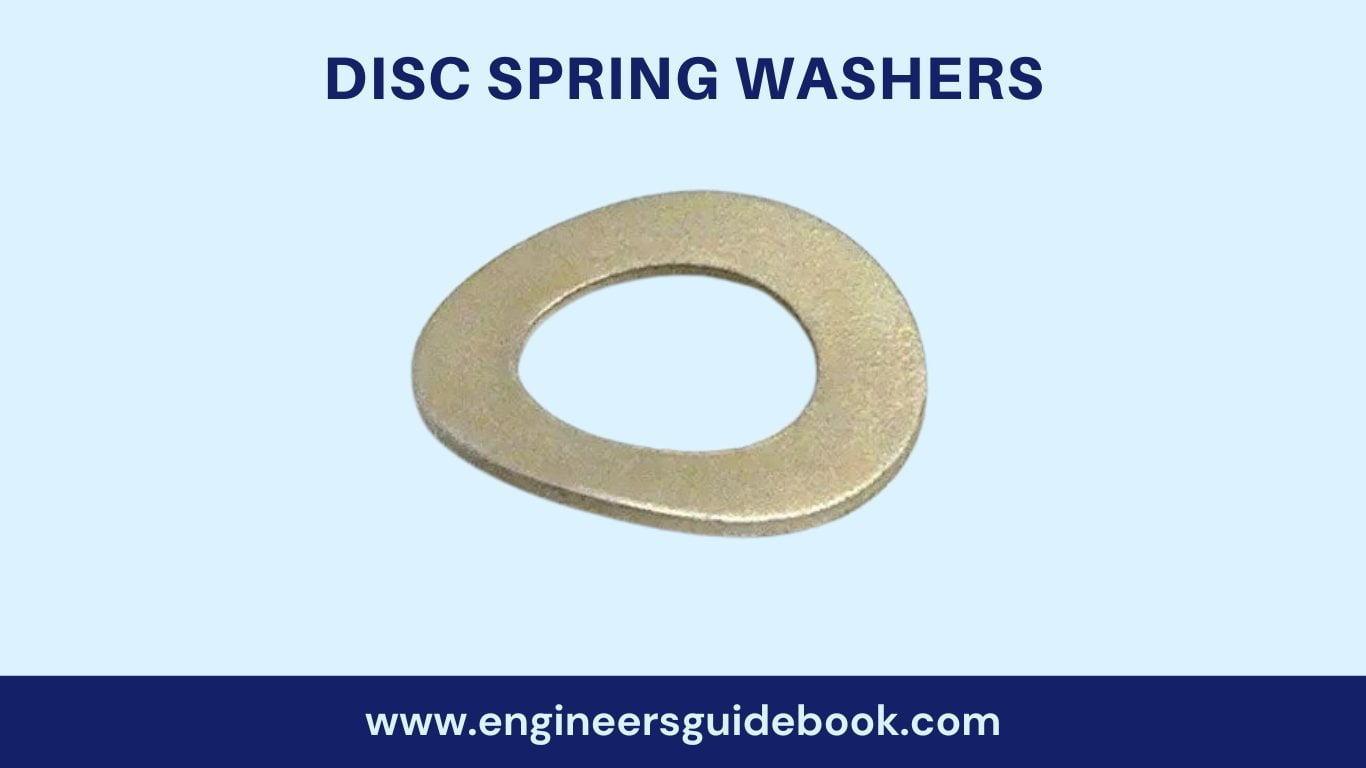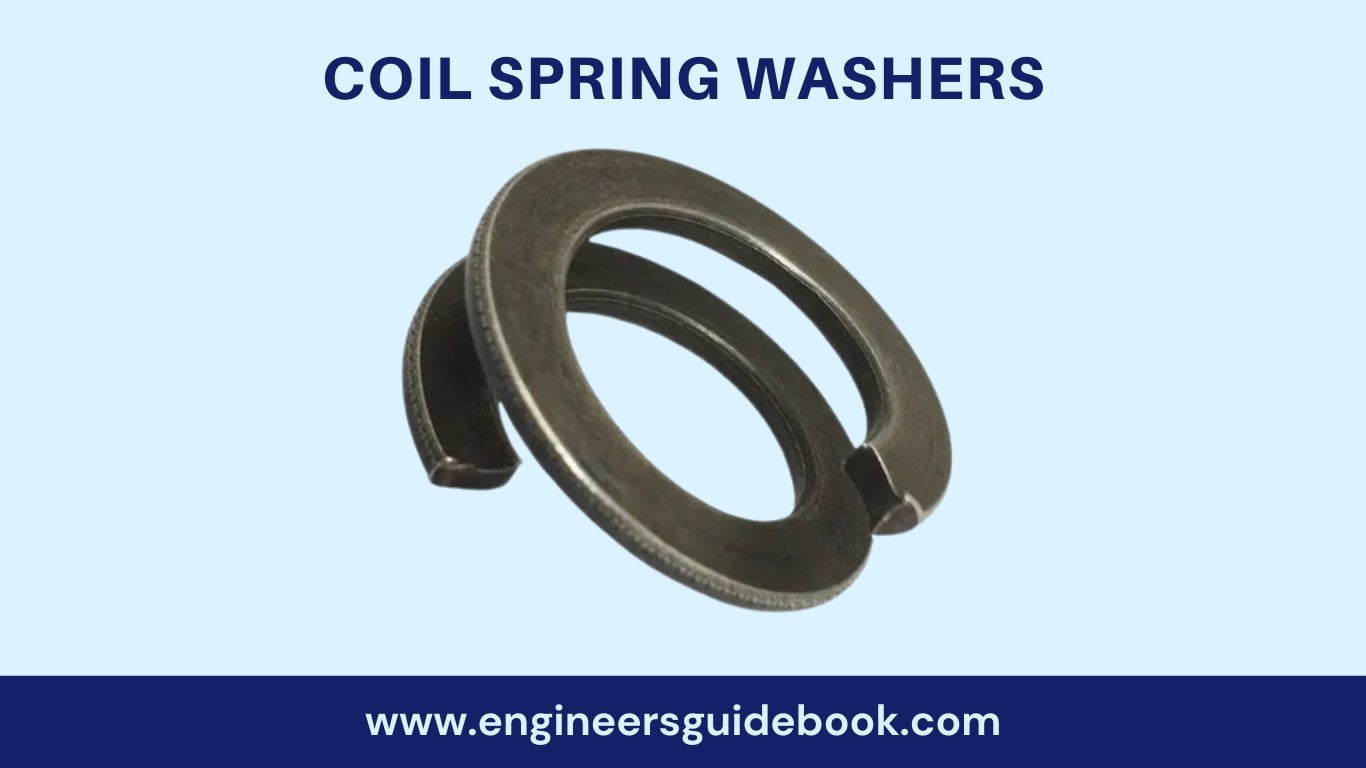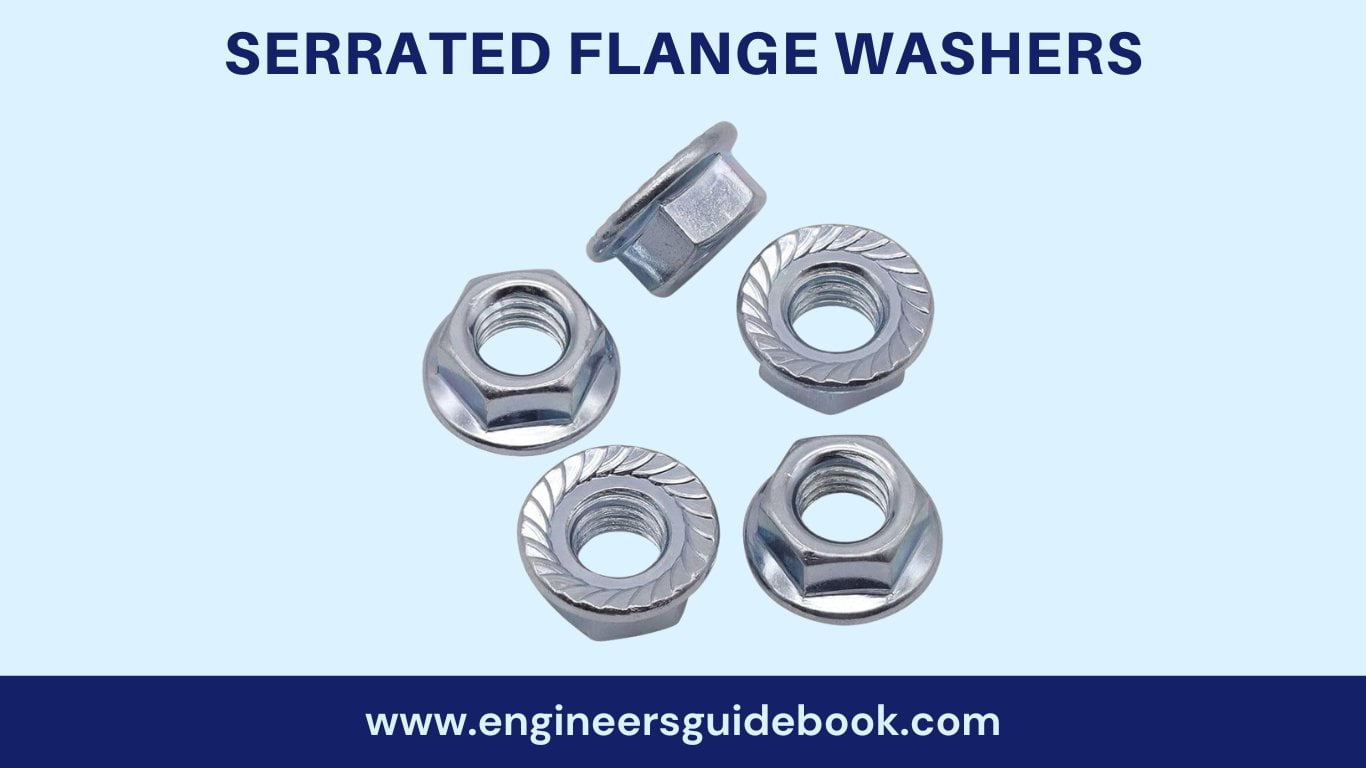August 14, 2024 By Bilal Arshad 6 minutes read

Spring washers, also known as lock washers, are an essential component in various mechanical assemblies and fastening systems. These versatile washers play a crucial role in maintaining the integrity of connections, preventing loosening, and ensuring the reliable performance of machinery and structures.
In this comprehensive article, we will explore the different types of spring washers, their unique features, and the diverse applications where they are commonly utilized.
Spring washers are a type of mechanical fastener that are designed to provide a constant tension or pressure between the mating surfaces of a bolt and the surface it is tightened against.
This tension helps to prevent the bolt from loosening over time due to vibrations, thermal expansion, or other external forces. Spring washers are typically made from heat-treated steel or other durable materials, and they come in a variety of shapes and sizes to accommodate different bolt sizes and applications.
There are several different types of spring washers, each with its own unique characteristics and applications. Let’s explore the most common types:
Split-ring spring washers, also known as internal tooth lock washers, are one of the most widely used types of spring washers. These washers feature a split or gap in the ring, which allows them to compress and expand as the bolt is tightened and loosened.
The serrated teeth on the inner and outer edges of the washer bite into the surfaces of the bolt and the surface it is tightened against, creating a secure connection that resists loosening.

Split-straight spring washers, also called external tooth lock washers, are similar to split-ring spring washers but have a straight, rather than a curved, profile.
These washers also feature serrated teeth on the inner and outer edges, which provide the same locking mechanism as the split-ring design. Split-straight spring washers are commonly used in applications where space is limited, as their straight profile allows for more compact installation.

Conical spring washers, also known as Belleville washers, are shaped like a shallow cone or dome. When compressed, the conical shape of the washer creates a spring-like effect, generating a high level of tension and resistance to loosening.
Conical spring washers are often used in applications where high clamping force is required, such as in heavy machinery or structural connections.

Wave spring washers, as the name suggests, have a wavy or undulating profile. This design allows the washer to compress and expand, creating a spring-like action that helps to maintain tension and prevent loosening.
Wave spring washers are commonly used in applications where space is limited, and they can provide a more compact alternative to traditional coil springs.

Disc spring washers, also known as Belleville disc springs, are circular discs with a slightly domed or concave shape.
When compressed, the disc spring washers flatten out, creating a spring-like force that helps to maintain tension and prevent loosening.
Disc spring washers are often used in high-load applications, such as in the construction of heavy machinery or in the aerospace industry.

Curved spring washers, also known as cup washers or curved lock washers, have a slightly curved or domed profile. This design allows the washer to compress and expand, creating a spring-like action that helps to maintain tension and prevent loosening.
Curved spring washers are often used in applications where a low profile is required, such as in the automotive and electronics industries.

Coil spring washers, as the name suggests, have a coiled or spiral design.
This unique shape allows the washer to compress and expand, generating a strong spring-like force that helps to maintain the desired clamping force.
Coil spring washers are commonly used in applications where a high degree of vibration resistance is required, such as in heavy machinery and industrial equipment.

Serrated flange washers, also known as tooth lock washers, feature a flange with serrated or toothed edges. The serrations on the flange bite into the surface of the component, creating a secure connection that resists loosening.
These washers are often used in applications where a high level of locking force is required, such as in structural connections or in the assembly of heavy-duty equipment.

Rubber-backed washers, also called rubber-insert washers, combine a spring washer with a rubber or elastomeric backing.
The rubber component provides additional vibration dampening and shock absorption, making these washers ideal for use in applications where there is a high degree of vibration or impact, such as in construction equipment or heavy machinery.

Nylon-inserted washers, as the name suggests, feature a nylon insert or lining within the washer. The nylon component creates a friction-based locking mechanism that helps to prevent the bolt from loosening, even in the presence of vibrations or thermal expansion.
These washers are commonly used in applications where a secure and vibration-resistant connection is required, such as in the automotive industry or in the assembly of electronic devices.

Spring washers are used in a wide range of industries and applications, where they play a crucial role in ensuring the reliable performance and safety of various mechanical systems. Some of the most common applications of spring washers include:
1. Automotive Industry:
Spring washers are used extensively in the automotive industry, where they help to secure components such as engines, transmissions, suspension systems, and various other mechanical assemblies.
2. Construction and Heavy Equipment
Spring washers are essential in the construction and heavy equipment industries, where they are used to secure bolts, nuts, and other fasteners in machinery, heavy vehicles, and structural connections.
3. Electrical and Electronics
Spring washers are used in electrical and electronic devices to secure components, prevent loosening, and maintain proper grounding connections.
4. Aerospace and Defense
In the aerospace and defense industries, spring washers are critical for ensuring the integrity of aircraft, spacecraft, and military equipment, where reliability and safety are paramount.
5. Machinery and Industrial Equipment:
Spring washers are used in a variety of industrial machinery and equipment, such as compressors, pumps, gearboxes, and other mechanical systems, to prevent loosening and maintain proper alignment.
6. Furniture and Appliances
Spring washers are also found in household items, such as furniture and appliances, where they help to secure connections and prevent rattling or loosening over time.
The use of spring washers in mechanical assemblies and fastening systems offers several key benefits:
Spring washers are an essential component in a wide range of mechanical assemblies and fastening systems, playing a crucial role in maintaining the integrity of connections, preventing loosening, and ensuring the reliable performance of machinery and structures.
By understanding the different types of spring washers and their unique features, engineers, technicians, and maintenance professionals can select the most appropriate solution for their specific application, ensuring the safety, efficiency, and longevity of their mechanical systems.
Spring washers, also known as lock washers, are designed to provide a constant tension or pressure between the mating surfaces of a bolt and the surface it is tightened against.
This tension helps to prevent the bolt from loosening over time due to vibrations, thermal expansion, or other external forces.
The main types of spring washers include split-ring spring washers, split-straight spring washers, conical spring washers, wave spring washers, disc spring washers, curved spring washers, coil spring washers, serrated flange washers, rubber-backed washers, and nylon-inserted washers.
Spring washers work by creating a constant tension or pressure between the mating surfaces of a bolt and the surface it is tightened against. This tension is generated by the spring-like action of the washer, which allows it to compress and expand as the bolt is tightened and loosened.
Spring washers are used in a wide range of industries and applications, including the automotive industry, construction and heavy equipment, electrical and electronics, aerospace and defense, machinery and industrial equipment, and furniture and appliances.
The key benefits of using spring washers include vibration resistance, thermal expansion compensation, increased clamping force, improved reliability, and cost-effectiveness.
Spring washers help to absorb and dissipate the effects of vibrations, accommodate changes in component size due to thermal expansion, and maintain the desired tension and clamping force in mechanical assemblies.
The choice of spring washer type depends on the specific requirements of the application, such as the level of vibration, the amount of clamping force needed, the available space, and the environmental conditions.
Factors like the size and material of the bolt, the surface finish, and the load-bearing requirements should also be considered when selecting the appropriate spring washer.
Spring washers can be used with a variety of bolt and fastener types, including hex bolts, machine screws, and other threaded fasteners.
However, the specific type and size of the spring washer should be selected to match the dimensions and requirements of the particular bolt or fastener being used.
When installing spring washers, it is important to ensure that the washer is positioned correctly between the bolt head or nut and the surface it is tightened against. The serrated or toothed edges of the washer should be facing the surface to be secured, allowing the teeth to bite into the material and create the necessary tension.
The bolt or fastener should be tightened to the recommended torque specification to ensure the proper clamping force is achieved.
Spring washers can generally be reused, as long as they are not damaged or deformed during the initial installation or removal process.
However, it is recommended to inspect the washer for any signs of wear or damage before reusing it, as this can affect the effectiveness of the locking mechanism and the overall reliability of the connection.
The main difference between a spring washer and a flat washer is their function and design. A flat washer is a simple, non-spring-loaded washer that is used to distribute the load of a bolt or fastener over a larger surface area.
In contrast, a spring washer is designed to provide a constant tension or pressure between the mating surfaces, helping to prevent the bolt from loosening over time.
Yes, spring washers can be used in high-temperature environments, as long as the material they are made of is suitable for the specific application and temperature range.
Certain types of spring washers, such as those made from heat-treated steel or other high-performance materials, are specifically designed for use in high-temperature applications, such as in the aerospace and automotive industries.
To maintain and care for spring washers, it is important to inspect them regularly for any signs of wear, damage, or deformation. If the washer is damaged or no longer functioning as intended, it should be replaced.
When installing or removing spring washers, care should be taken to avoid bending or distorting the washer, as this can compromise its spring-like properties. Proper storage and handling of spring washers can also help to ensure their long-term performance and reliability.
Yes, spring washers can be used in corrosive environments, but the choice of material is crucial. Spring washers made from stainless steel, brass, or other corrosion-resistant materials are better suited for use in environments with high humidity, saltwater, or other corrosive elements.
These types of spring washers are often used in marine applications, outdoor equipment, and other environments where corrosion resistance is a key requirement.

Bilal Arshad, with a PhD in Mechanical Engineering from Caltech, specializes in robotics and automation. His cutting-edge research in autonomous systems is revolutionizing industrial manufacturing processes.
Explore the Engineer’s Guidebook! Find the latest engineering tips, industry insights, and creative projects. Get inspired and fuel your passion for engineering.
© 2023-2024 Engineer’s Guidebook. All rights reserved. Explore, Innovate, Engineer.